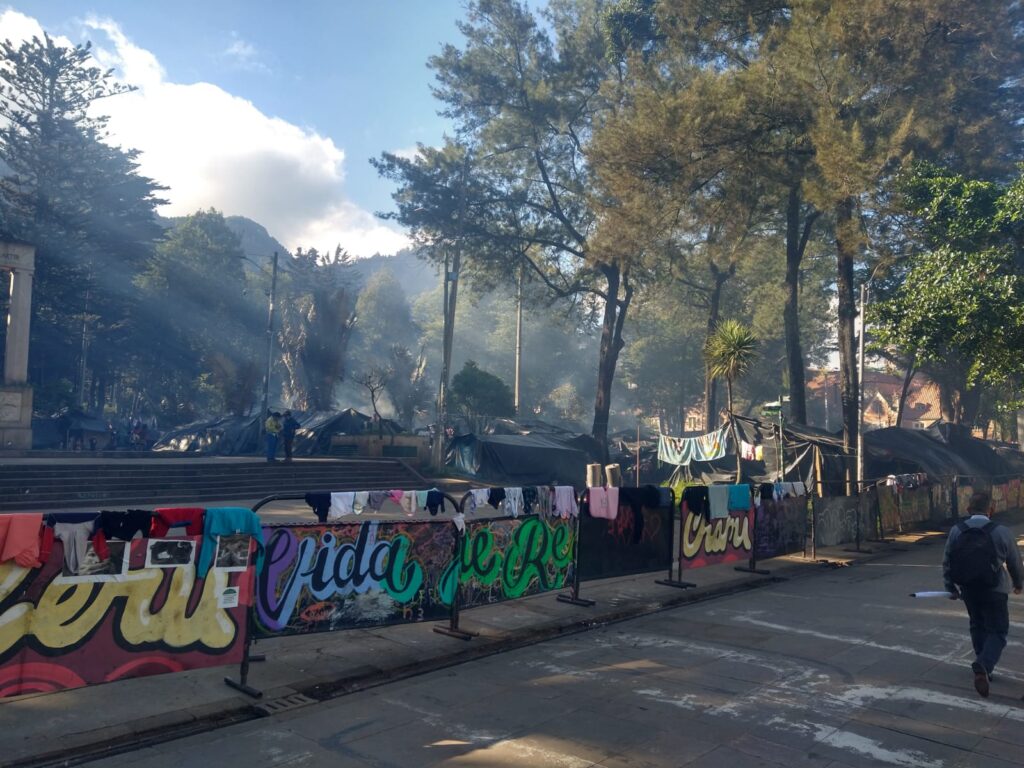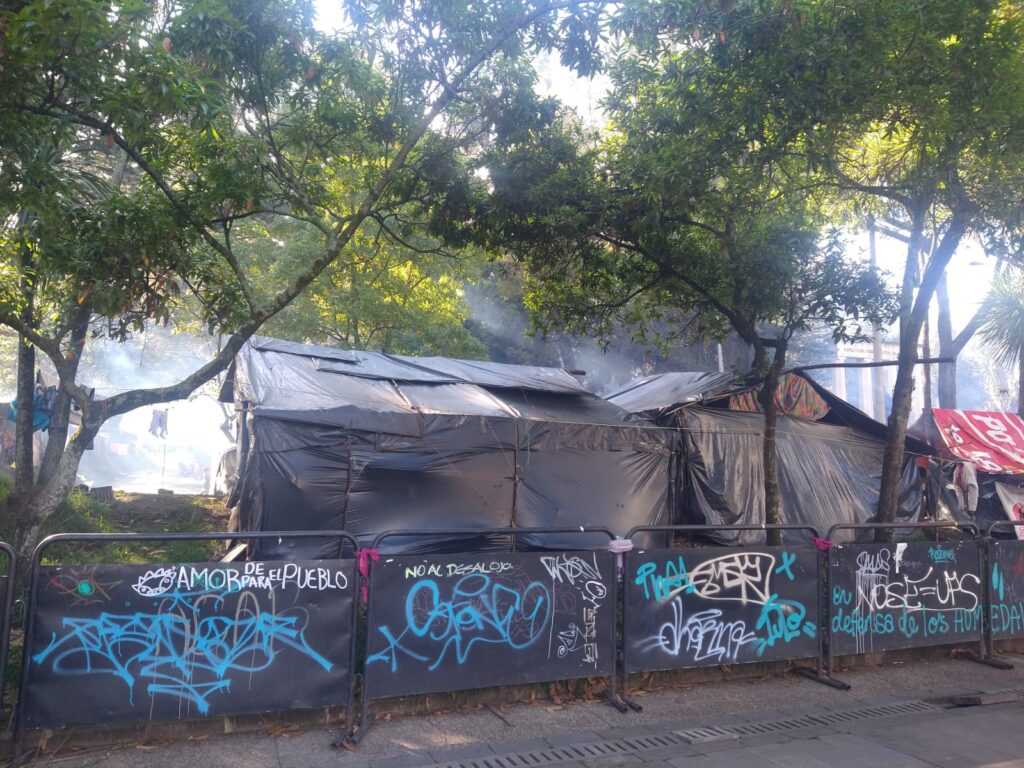The Embera and other indigenous groups in the Parque Nacional should make us consider our own impact on the world around us

The Parque Nacional is a vital part of the Bogotá landscape, a crucial green space for people in the centre of the capital and a gateway to the Cerros Orientales. For the last half a year, much of the park has been blocked off and become a refugee camp for indigenous people protesting their treatment by authorities and fleeing persecution. Despite strong words from the mayor’s office, no solutions are coming forward and the degradation of the park continues apace. Today and yesterday, yet more talks are taking place between communities in the park and various local and national authorities.
For more than eight months now, the Embera people have been in the Parque Nacional, occasionally holding demonstrations to block traffic. Even so, barricades have been erected to help block visibility. But visible it is, this camp of a hundred or more black tarpaulins. And that’s the point of it – these people need a place to live and by occupying a central space, they hope to get guarantees from the government on health, housing, and other issues. Abject poverty is now brought into sharp contrast with privileged tennis players a scant few yards away. As I jog past in the morning, I am reminded of the damage my smug privilege causes elsewhere in the world. So often, these are issues that Colombia brushes into obscurity, hides in the shadows, and deliberately ignores. The state of course, but most of us in wider society as well.
Maybe you are close to zero rubbish, or have your own solar panels generating all your power. If you’re like most of us though, your carbon footprint will dwarf anyone in the Parque Nacional camp. Seeing columns of smoke rising from inefficient woodfires might be unpleasant, but the energy I’m using as I write this will be doing exactly the same thing, just far from view. The rubbish I put out on the street last night might not be festering there now like it is in the camp, but only because it’s in a squalid mass tip somewhere far from my middle-class reverie.

The topographical map of Bogota is now a toilet
For all that many might think of indigenous people living in perfect harmony with the natural world, the reality is somewhat different. Be under no illusions – the damage done to the park over the last few months is notable. The Río Arzobispo, such as it is, is now an open sewer, its edges completely befouled with human faeces. The topographical map of Bogotá and its surrounds is a literal toilet. The forest surrounding the park has had many of its young trees hacked down. Black water oozes permanently over the pathways.
None of this, though, is to blame the (mainly) Embera people for their actions. It’s hardly as though they want to be there, for a start, rather that they have been forced into this position. Kicked out of their lodgings in Simón Bolívar after being displaced from other parts of Colombia, the only option was to live in tents. Better to erect those there than on the outskirts of Bogotá. It’s just that the Parque Nacional was never designed to house humans, nor is it suitable for that purpose. Now nobody wants to take responsibility.
For those who feel angry over the occupation of the Parque Nacional, save your fury for an alcaldía that can’t find appropriate housing for desperate people. Turn your anger at a government that makes at best no attempt to protect land and at worst openly colludes to exploit it. Rage against a system of absurd overconsumption and grotesque inequality. Those should be the targets of ire, not the people trapped in an awful situation.

| Background: The indigenous groups in Parque Nacional In September 2021, groups of Embera and other indigenous communities set up camp in Bogotá’s Parque Nacional. According to a March census by various groups, including the Ministry of the Interior and the Unit for Victims, there are over 500 families living in the park making up about 1,500 people. About half are Embera and half are from other indigenous groups. There’ve been several incidents in the past eight months. In January, a truck driver who fatally killed two Embera people in a collision near a similar camp in La Florida was lynched. In April, a woman and two children from the park were injured in an accident with a taxi on the Septima. The ESMAD got involved to break up subsequent protests. Seven more people were injured. Accusations fly on all sides about who should be doing what. Various officials have made various offers, but the challenge is to find alternative housing and give guarantees that the communities in the park can actually trust. The people camped out in the park aren’t only hanging ecological laundry out in public. The people living in the park have been let down by systems that should have protected them, displaced from their homes by violence. They are a visible reminder that the peace deal did not end conflict in rural parts of Colombia. They are a reminder of the things we seek to ignore to make ourselves feel better. |





